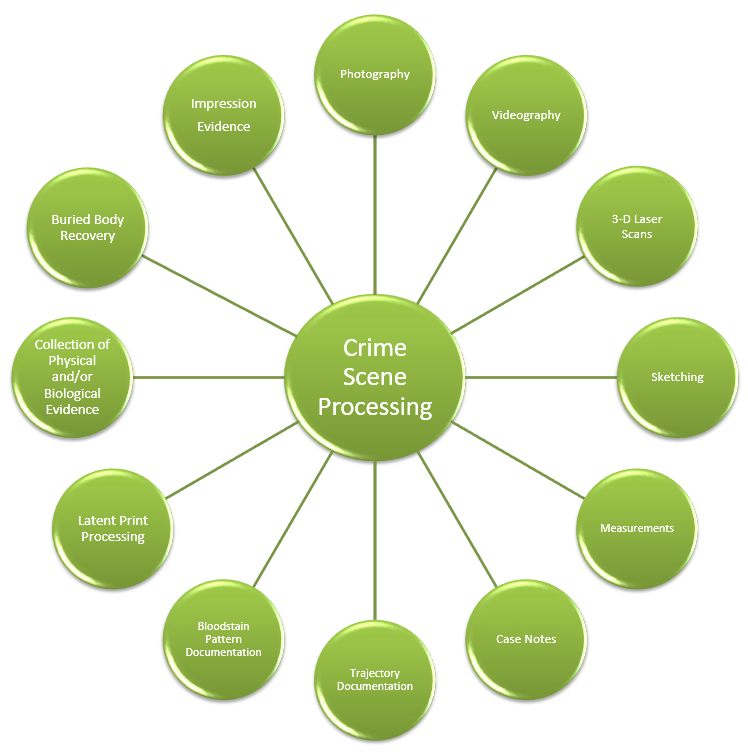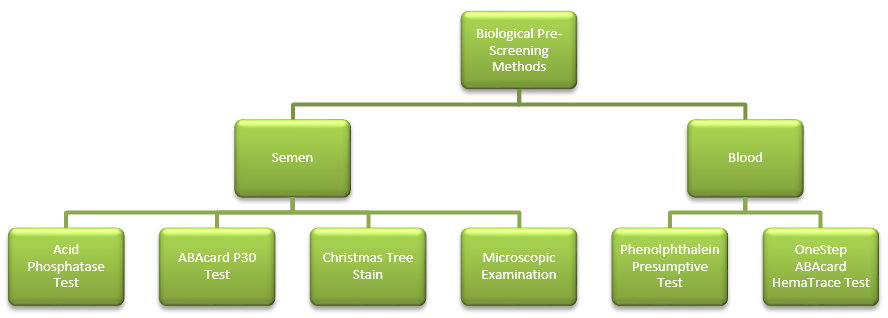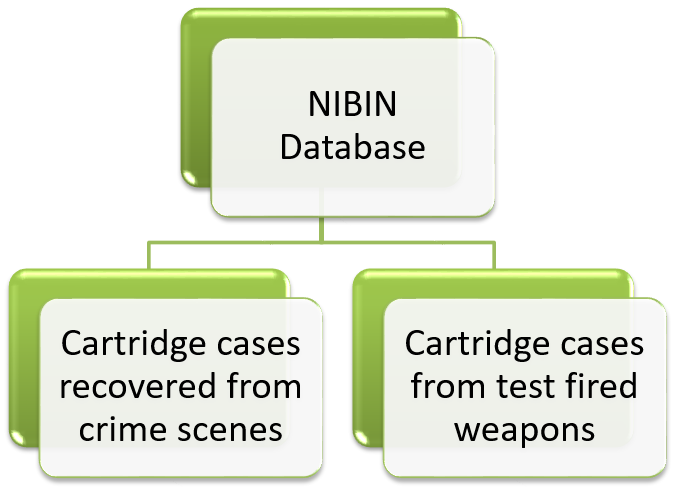Forensic Laboratory Services Division
The mission of the Forensic Laboratory Services Division is to support the overall mission of the Seminole County Sheriff's Office of enhancing the quality of life by reducing crime and the fear of crime throughout Seminole County by providing accurate, scientifically sound and professional forensic services to the law enforcement community within Seminole County. The Forensic Laboratory Services Division provides service to the seven municipalities within Seminole County as well as other state and federal agencies.
The Laboratory was first accredited by the American Society of Crime Laboratory Directors / Laboratory Accreditation Board (ASCLD/LAB) in June 2009. In May 2015, the Laboratory received its international accreditation with ASCLD/LAB.
ASCLD/ LAB merged with the ANSI National Accreditation Board (ANAB) in 2018. As a result, the Laboratory transitioned to the ANAB accreditation.
The laboratory’s scope of accreditation includes the Biology, Crime Scene Investigation, Friction Ridge, and Footwear disciplines. While the laboratory is not accredited in the Integrated Ballistic Information Network (NIBIN), it is a Bureau of Alcohol, Tobacco, Firearms and Explosives (ATF) partner and is therefore allowed to utilize their BrassTrax 3D HD Acquisition System to image forensic evidence for database searches.
All methods, equipment and instrumentation are validated and performance checked prior to use on evidence. The procedures utilized within the Laboratory are commonly recognized by the forensic science community. Laboratory reports issued for customers are in a simplified format. The agreement with customers states what will and will not be in the reports. All elements not in the report will be available upon request from the laboratory. Forensic personnel within the Laboratory are all thoroughly trained and proficiency tested annually within their assigned disciplines.
The Forensic Laboratory Services Division is comprised of three units that cover five different areas of specialization.
Click on a link below to learn more about the services and methods provided by the Laboratory:
Evidence
Crime Scene
Impression Evidence
Latent Prints
Biological Screening
NIBIN Entry
Evidence
The Evidence Unit is a fundamental part of the Forensic Laboratory Services Division. It receives, preserves, and safeguards all found, recovered, and evidentiary property for the Seminole County Sheriff's Office. It currently manages over 100,000 items.
The responsibilities of the Evidence Specialists include, but are not limited to:
- Receiving, retrieving, logging, transferring, auditing and disposing of property and/or evidence
- Maintaining accurate chain of custody records in accordance with the Unit’s policies and procedures
- Maintaining accurate inventory of evidence and property
- Assisting other agencies in the disposal of property or evidence
- Returning evidence or property to owners in accordance with the Unit’s policies and procedures
- Delivering evidence to court when requested
- Delivering evidence to the Florida Department of Law Enforcement for testing
- Presenting testimony in criminal courts and depositions when requested
All Evidence Specialists obtain and maintain certification from the International Association for Property and Evidence and the Property and Evidence Association of Florida.
Crime Scene
The Crime Scene Unit employs five Crime Scene Analysts, and a Crime Scene Supervisor, giving the unit over 70 years of combined experience. These individuals have received extensive and highly-specialized forensic training. Analysts obtain and maintain certification by the International Association for Identification, the world’s oldest and largest association of forensic professionals. All Crime Scene Unit personnel have substantial training and experience in courtroom testimony and are available for testimony when requested.
Crime Scene Analysts are called out to document and process crime scenes requiring their forensic expertise; therefore, the Crime Scene Unit has at least two Analysts available to respond 24 hours a day, 7 days a week, even including holidays. Analysts document the scene using photography, videography, sketching, measurements, 3-D laser scans, and case notes. Additional scene processing may include trajectory and bloodstain pattern documentation, latent print processing, the collection of physical and/or biological evidence, and buried body recovery. Depending on the nature and extent of the scene, thorough documentation and processing may take anywhere from a few hours to a couple of weeks.
Clearing the scene, however, does not mark the end of the Analyst’s responsibilities. Evidence collected at the scene needs to be transported back to the lab, where the Analyst will examine it, process it for latent prints and/or biological evidence as necessary, and submit it to the Evidence Unit. Analysts may also be required to attend and collect evidence from autopsies, as well as to collect court ordered buccal swabs.
The Crime Scene Unit has a variety of validated methods and equipment to process both crime scenes and items of evidence. Some of these include, but are not limited to:
- Latent print powders
- Cyanoacrylate fuming to develop and enhance latent prints
- Chemicals, such as ninhydrin and physical developer, to develop latent prints on porous surfaces such as paper
- Fluorescent dye stains to develop latent prints
- Protein stains to enhance latent prints deposited in blood
- Small particle reagent to develop latent prints on wet surfaces
- Gun blue to develop latent prints on firearm cartridges and cartridge cases
- A forensic light source to search and examine items of evidence for latent prints and biological evidence


Impression Evidence
Footwear and tire impressions are commonly found at crime scenes and can provide important investigative leads. These impressions can be two-dimensional, such as a tire burnout mark on asphalt, or three-dimensional, such as a shoeprint left in sand. Both types of impressions can be enhanced, documented, and recovered in several ways, some of which include powder and conventional lifting techniques, electrostatic lifting, casting and examination quality photography. Once the impressions have been properly documented and recovered, they can be compared to known footwear or tire standards, respectively. The immense number of footwear outsole and tire tread designs, as well as the quality and variability of the impressions, makes this task extremely difficult and time-consuming.
The Forensic Laboratory Services Division currently has two competent Footwear Impression Analysts, who have over 20 years of combined experience. Their expertise allows them to identify individual or randomly acquired characteristics in a questioned footwear impression and determine if there is an association between the questioned impression and the known footwear standard. Analysts utilize the footwear reference databases SoleMate FPX and Bluestar Software TreadMatch to determine the make or model of the footwear.
The responsibilities of a Footwear Impression Analyst include, but are not limited to:
- Enhancing footwear impressions using physical and chemical processing techniques
- Creating molds and casts of footwear impressions at crime scenes
- Photographing footwear impressions both before and after processing
- Evaluating and comparing footwear impressions
The Laboratory documents tire impressions at crime scenes but does not currently perform tire impression evaluations or comparisons.
Analysts obtain and maintain certification by the International Association for Identification. They have substantial training in courtroom testimony and are available for testimony when requested.

Latent Prints
The specialized skin on the palms of the hands and the soles of the feet has raised ridges and furrows and is called “friction ridge skin.” These friction ridges form during early fetal development and remain unchanged from birth until after death, barring any significant damage to the friction ridge skin. The specific arrangements of the ridges are completely unique to the individual, allowing them to be used as a means of identification. In fact, using the friction ridge skin for the purpose of identification has been in practice for more than 100 years.
A latent print is an invisible, unintentional reproduction of the friction ridge skin that may be left behind when the friction ridge skin comes in direct contact with the surface of an item or object.
The Latent Print Unit is a full-service latent print unit, with over 55 years of combined latent print experience that uses state-of-the art forensic technology to enhance and identify latent fingerprints, palm prints and footprints.
The responsibilities of the Latent Print Unit include, but are not limited to:
- Analyze, compare, and evaluate latent prints
- Analyze, compare, and evaluate inked prints
- Comparing prints from deceased individuals
- Comparing prints of missing persons
- Comparing prints in cases of questioned identity
Analysts utilize two fingerprint and palm print databases, the state’s Multi-Biometric Identification Solution (MBIS) and the FBI's Next Generation Identification (NGI), to provide invaluable investigative leads.
Analysts obtain and maintain certification by the International Association for Identification. They have substantial training in courtroom testimony and are available for testimony when requested.

Biological Screening
The Forensic Laboratory Services Division’s Biological Screening Lab is an invaluable resource that effectively provides investigators with timely, pertinent case information and potential investigative leads. The testing is performed by two Analysts, both of whom successfully completed the Florida Department of Law Enforcement’s extensive Biology Training Program. In the Biological Screening Lab, Analysts pre-screen items of physical evidence for the presence of bodily fluids. Currently, the lab is pre-screening for blood and semen only. Any biological samples recovered during the pre-screening will be submitted to the Florida Department of Law Enforcement’s Biology Section for DNA testing, if requested. Some of the methods used in the lab include:
- Phenolphthalein Presumptive Blood Test
- OneStep ABAcard HemaTrace Test
- Acid Phosphatase test
- Christmas Tree Stain
- ABAcard P30 test
- Microscopic examination for male genetic material

NIBIN Entry
The Bureau of Alcohol, Tobacco, Firearms and Explosives (ATF) manages the National Integrated Ballistic Information Network (NIBIN), a national database containing digital images of cartridge cases recovered from crime scenes or test-fired from confiscated weapons. The Forensic Laboratory Services Division is an ATF NIBIN partner, and all of its Crime Scene Analysts are NIBIN Certified. The Analysts image cartridge cases from crime scenes into NIBIN using the BrassTrax 3D HD Acquisition System for comparison with cartridge cases already in the system. They also test fire weapons to obtain cartridge cases for NIBIN entry. The Florida Department of Law Enforcement Firearms Section will conduct the comparisons generated by these entries.
